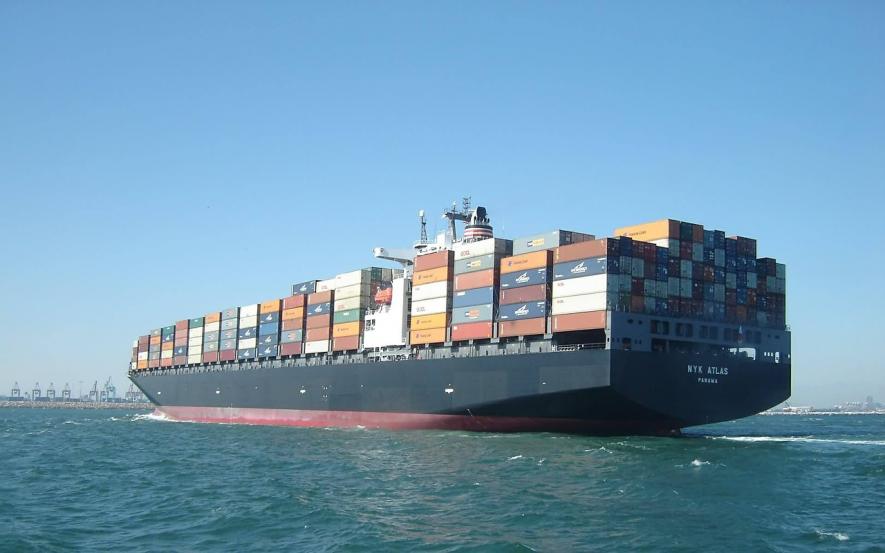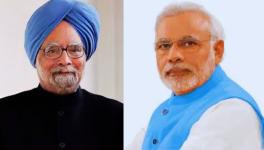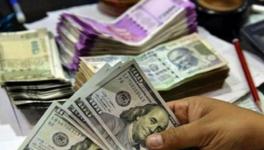Why Export-led Growth’s Apparent Success can Vanish in a Jiffy

Representational image. | Image courtesy: Neepix
The wisdom of pursuing a strategy of export-led growth has been discussed among development economists for at least half a century, ever since the so-called East Asian “miracle” started to be contrasted with the comparatively sluggish growth experience of countries like India that were pursuing, in the World Bank’s language, an “inward looking” development strategy. This entire discussion, however, has missed an element that plays a crucial role in real life.
Among the various expenditures that constitute aggregate demand in an economy, some are autonomous while others are induced by the growth of aggregate demand itself. Exports and government expenditure are generally considered to be the two main autonomous items: consumption, for any given distribution of income, is supposed to be dependent on the level of income itself.
There is no doubt an autonomous element in consumption, too, that is independent of income, but the spontaneous growth in this element becomes pronounced only in certain situations, for instance when goods hitherto unavailable to consumers suddenly become available.
The growth of demand and hence of output in an economy depends on the growth of the autonomous element of demand. In a neo-liberal economy where being open to cross-border financial flows imposes limits on the fiscal deficit relative to GDP and also practical constraints on the government’s ability to tax the rich and stimulate demand without raising the fiscal deficit, exports become the main stimulus for growth. A neo-liberal economy, in short, is characterised by primary reliance upon export-led growth.
But the export-led growth strategy is not confined only to a neo-liberal setting. The government can deliberately encourage exports, rather than enlarging its own expenditure for expanding the home market, in which case we can have export-led rather than government expenditure-led growth, but with the government still being pivotal to growth; indeed, many argue that this was the case with East Asian countries.
We must distinguish between two cases among countries pursuing an export-led growth strategy: one where the countries systematically earn large current account surpluses and thereby build up their foreign exchange reserves, China being a prime example.
In the case of such an economy, any adverse development in the world economic situation makes a difference only to the magnitude of the current account surplus, which affects the magnitude of accumulated foreign exchange reserves only marginally. Therefore, the country can ride out such an adverse development without experiencing any crisis.
Many other countries, however, belong to the second category, where they run more or less perennial current account deficits, balance their payments through private financial inflows, and even when they build up foreign exchange reserves these are financed through borrowings, including from private financiers. India belongs to this category, as do the countries of South Asia in general, and indeed most countries of the global south.
In the case of this second group of countries, if there is a widening of the current account deficit because of some exogenous reason, whether a pandemic-induced reduction in tourist earnings (as in the case of Sri Lanka), or a Ukraine War-induced increase in import prices, or a world recession-induced fall in export earnings (both the last two have happened in the case of Bangladesh), its impact on the economy gets exaggerated because of the behaviour of private agents in general, and of private financiers in particular. This is because, when there is a widening of the current account deficit, and hence a greater need for private financial inflow, this very widening causes a greater financial outflow.
Private financiers expect the currency of the country that has seen a widening of its current deficit to depreciate, and hence, concerned exclusively with their own interest, take funds out of the country, thereby intensifying the foreign exchange problem for it. In fact, if things were left exclusively “to the market”, it is not clear that the country would ever reach an equilibrium in the foreign exchange market. But that is when the country approaches the IMF, and a loan from it creates expectations among private financiers that the depreciation of the exchange rate would be arrested, so that the foreign exchange market can come to some sort of an equilibrium.
But the IMF demands a heavy price for giving a loan, in the form of a reduction in welfare spending, a winding down of the public distribution system, a handing over of the nation’s assets to foreigners (sometimes called “denationalisation” of assets) and so on.
It is this exaggeration of an initial shortfall in foreign exchange to a huge shortfall because of the behaviour of private finance that occurs over an extremely brief period and pushes the country to the steely embrace of the IMF, which explains why countries suddenly go from being “miracles” to mendicants.
The problem with export-led growth is precisely this: its apparent success can evaporate in a jiffy; and this happens when the pursuit of export-led growth makes the country dependent on the whims and caprices of globalised finance, as it invariably does for meeting a current deficit.
We have seen this happen in our neighbourhood, even to countries like Sri Lanka and Bangladesh which had notched up relatively impressive human development achievements.
With the world economy stagnating, and exports of several Third World countries being hit by such stagnation, the list of mendicant countries is likely to grow in the coming days; and India despite its economic size and the large size of its foreign exchange reserves (though these are built up not from current account surpluses but from financial inflows) is by no means immune from it.
The only saving grace in India’s case is its foodgrain self-sufficiency (though at very low levels of consumption) and external relations that would allow oil imports from countries “sanctioned” by imperialism. Even foodgrain self-sufficiency, however, would have disappeared if the Narendra Modi government’s three farm laws had been implemented; but the kisans saved the day for the country.
Even without any change on the trade front, too, there can be a spontaneous outflow of finance, triggered by any of a host of factors, including a change in the ruling party of a country, or a change in the cabinet composition within the same ruling party. Such an outflow, by causing a depreciation of the exchange rate, would encourage a further outflow; and so on.
Any initial disturbance in the foreign exchange market, therefore, gets exaggerated because of the country’s exposure to the vortex of global financial flows, and such exposure is essential in an economy pursuing an export-led growth strategy, because otherwise the country would find it impossible to finance a current account deficit on the balance of payments. It can, of course, restrict imports to balance its current account, but then such restriction is incompatible with an export-led growth strategy as it would hurt the country’s international competitiveness.
The arch Right-wing politician Javier Milei, who has recently been elected president of Argentina, is supposed to have come to power because of the high rate of inflation (150%) that had hit that country; and the preceding Peronist government has been held responsible for this high inflation. The Right-wing press has been having a gala time lambasting what it calls the Left-wing policies of the Peronists. But this is a complete travesty of facts.
It is not the Left-wing policies of the Peronists but the Argentine rich taking money out of that country which is responsible for the high rate of inflation there. This financial outflow has caused an exchange rate depreciation which has stimulated further financial outflow; and such continuous depreciation, by raising the prices of imported inputs which have then been “passed on” in the form of higher final goods prices, has caused the observed rate of inflation.
There is a vicious circle here. An initial financial outflow makes the government, in Argentina’s case the non-Peronist government, take an IMF loan which forces the country to remain chained to a neo-liberal regime; and when the time comes for repaying the IMF loan, the anticipation of a worsening of the balance of payments problem, causes a further outflow of finance and a further exchange rate depreciation that keeps accentuating. The regime associated with export-led growth in other words can be, and has been shown to be, destabilising in the extreme.
The idea of export-led growth had become discredited by the inter-war crisis of world capitalism, when large-scale import substitution had occurred virtually all over the Third World, before it made a reappearance through neo-liberalism; with world capitalism confronting a new crisis, a change away from it is once again on the agenda.
Get the latest reports & analysis with people's perspective on Protests, movements & deep analytical videos, discussions of the current affairs in your Telegram app. Subscribe to NewsClick's Telegram channel & get Real-Time updates on stories, as they get published on our website.
























